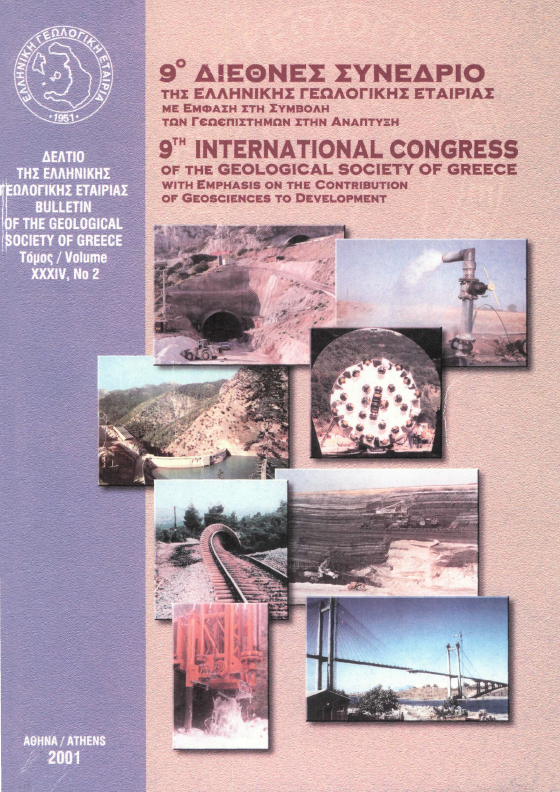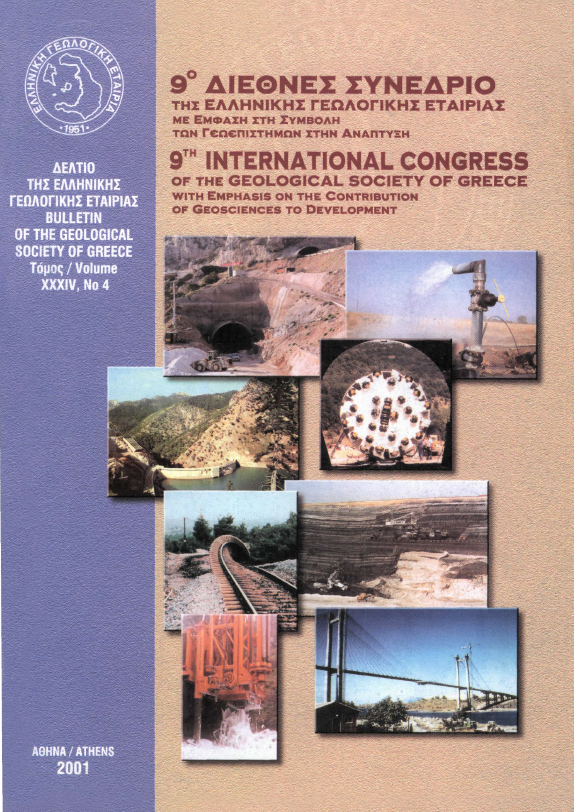Contribution of factor analysis to the study of paleoclimatic and paleoceanographic variability in SW Aegean sea, Greece
Résumé
Factor analysis was subjected to high resolution microfauna data. The microfauna data (planktonic and benthic foraminifera) comes from analyses of two gravity cores selected from SW Aegean Sea and concerns the last 45000yrs. The two cores contain the sapropelic sequence of SI which appears in two layers Sia and Sib and the sapropelitic sequence of S2. The results of the analyses have been high accurate dated by the AMS method. The application of factor analysis to planktonic forams revealed 5 factors. Two of these factors cluster planktonic species which are indicators of temperature changes such as Gs. ruber, Gs. sacculifer, Or. universa and Globigerinella which are indicative of warm and oligotrophic waters and T. quinqueloba and Gr. scitula which are indicative of cold waters. So these factors can be considered as sea surface temperature depended. The variation of their scores compared with the δ1 80 data showed a sequence of palaeoclimatic changes of long and short duration, which may correspond to global events such as Heinrich 1, 2, 3, 4 and Younger Dryas. The other three factors cluster planktonic species which prefer high eutrophicated waters, such as Neogloboquadrina, G inflate and G bulloides. The variation of their scores revealed the periods where the marine productivity was improved by (i) the shoaling of the pycnocline within the euphotic zone and the subsequent development of Deep Chlorophyl Maximum (DCM) layer, (ii) the increase of water outflows and (iii) the well mixed surface waters. Furthermore, factor analysis showed that the organic material of SI is related more to the enhanced river outflows, than that of S2 which seems to be related with the development of DCM layer. The application of the factor analysis to benthonic forams revealed 5 factors, which appear to correspond to five stages of bottom water enrichment. The 1st factor cluster epifauna species with high oxygen demands such as H. elegans, Asterigerinata, Valvulineria, Rosalina, Miliolidae, Nonion spp. and Cassidulina spp. The variation of the scores showed that the last 45kyrs SW Aegean Sea was characterized by well oxidized bottom waters except of the periods of sapropel deposition. When the trophic level of the sea bottom increases such as occurs at the deposition of S2, the dominated benthic fauna is represented by the 2nd factor with species as Cibicides spp., Uvigerina spp. and Cassidulina spp. Species such as Gyroidina spp, Uvigerina spp., Bulimina spp. and Chilostomela spp. are represented by the 4th factor, which indicates environments of reduced oxygen supply and/or increased organic flows, such those which developed during the interruption of the sapropelic deposition of SI. Shallow infauna species such as Bolivina spp. and B. marginata and deep infauna species such as Fursenkoina spp. are represented by the 3th factor, which indicates dysoxic environments such those which developed exactly before the deposition of Sia and Sib. Deep infauna species such as Cassidulinoides spp and Globobulimina spp. are represented by the 5th factor, which shows highly dysoxic, almost anoxic conditions, such those which developed at the begging of Sia and Sib.
Article Details
- Comment citer
-
ΓΕΡΑΓΑ Μ., ΤΣΑΪΛΑ-ΜΟΝΟΠΩΛΗ Σ., ΠΑΠΑΘΕΟΔΩΡΟΥ Γ., ΙΩΑΚΕΙΜ Χ., & ΦΕΡΕΝΤΙΝΟΣ Γ. (2018). Contribution of factor analysis to the study of paleoclimatic and paleoceanographic variability in SW Aegean sea, Greece. Bulletin of the Geological Society of Greece, 34(2), 557–564. https://doi.org/10.12681/bgsg.17094
- Rubrique
- Stratigraphy

Ce travail est disponible sous licence Creative Commons Attribution - Pas d’Utilisation Commerciale 4.0 International.
Authors who publish with this journal agree to the following terms:
Authors retain copyright and grant the journal right of first publication with the work simultaneously licensed under a Creative Commons Attribution Non-Commercial License that allows others to share the work with an acknowledgement of the work's authorship and initial publication in this journal.
Authors are able to enter into separate, additional contractual arrangements for the non-exclusive distribution of the journal's published version of the work (e.g. post it to an institutional repository or publish it in a book), with an acknowledgement of its initial publication in this journal. Authors are permitted and encouraged to post their work online (preferably in institutional repositories or on their website) prior to and during the submission process, as it can lead to productive exchanges, as well as earlier and greater citation of published work.





